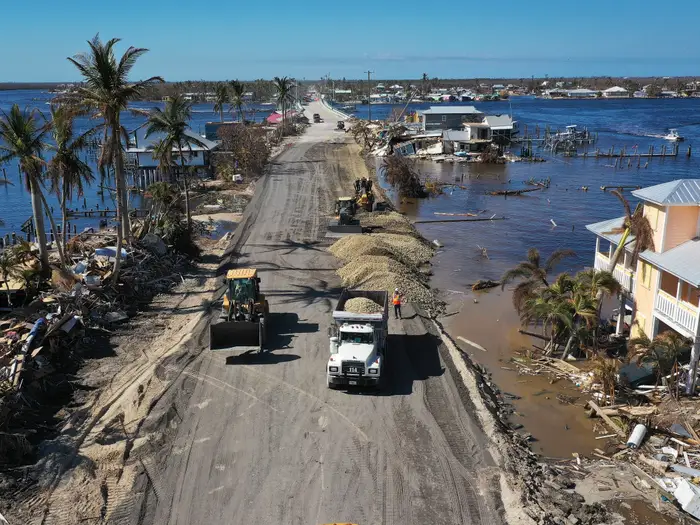Why Hurricane Insurance Do Not Exist And the Coverage You Need for Storm Damage?
The reality is that “hurricane insurance” does not exist as a stand-alone policy, despite the fact that many homeowners think they are covered by it. When the next major storm strikes, you can be exposed because of this widespread belief. Knowing what kinds of coverage actually protect your house from hurricane-related damage is crucial, rather than depending on a nonexistent product.
Understanding what is and is not covered by your policy, whether it be for flood protection or windstorm insurance, could be the difference between financial ruin and complete recovery. We’ll explain the actual coverage you require in this guide, along with how to ensure you’re prepared for storms before it’s too late.
Get an insurance quote today
Why Hurricane Insurance Do Not Exist And the Coverage You Need for Storm Damage
There isn’t a stand-alone insurance policy known as “hurricane insurance,” despite what many people think. In reality, what most people call that is a hurricane deductible that is part of a typical homeowners insurance policy. This deductible, which is usually expressed as a percentage of your home’s insured value, establishes the amount you have to fork over before your insurance starts to pay for storm-related damages. Hurricane-prone areas, such as the District of Columbia and 19 coastal states, frequently have this structure.
“Hurricane insurance” can sometimes refer to more specialized forms of coverage, such as windstorm or flood insurance. In high-risk regions like Texas and Florida, where there is a significantly higher chance of storm-related damage, these plans are frequently required.
Knowing the True Significance of Hurricane Coverage
The calculation of hurricane deductibles differs from that of regular homes insurance deductibles. They are based on a percentage of the insured value of the house rather than a set sum of money. Hurricane deductibles can vary from 2% to 5% of your total house coverage, which can amount to thousands of dollars depending on the value of your property, whereas a typical deductible might be a fixed $500 or $2,000 amount.
Following Hurricane Andrew in 1992 and Hurricane Katrina in 2005, these deductibles gained even greater traction. Insurers and even their reinsurance providers were overtaken by the enormous claims brought on by these devastating hurricanes. Insurers implemented percentage-based deductibles in hurricane-prone areas, mostly along the Atlantic and Gulf coasts, to reduce future financial risk.
A hurricane deductible usually kicks in when a named hurricane makes landfall in your region. In certain states, the clause may even be activated by a powerful tropical storm. Until the storm is formally downgraded, the deductible is still in force. The laws governing the application of these deductibles vary from state to state.
Differentiating between hurricane and windstorm deductibles is also crucial. The latter might be more generally applicable to damage brought on by strong winds that aren’t connected to a specific storm. Often starting at just 1% of the insured value, windstorm deductibles are cheaper.
Where Do Hurricane Deductibles Go?
In several states, homeowners’ insurance policies must include hurricane deductibles. These include states with a higher frequency and intensity of hurricanes, such as those near the Atlantic and Gulf coasts. Regarding the deductible amounts, each of these states has its own rules, restrictions, and standards.
Measures to Close the Gap in Hurricane Coverage
You may not be completely protected even if your homeowners insurance has a storm deductible. Flood damage from natural catastrophes is typically not covered by ordinary homeowners insurance plans. You will require a separate flood insurance policy to safeguard against flood-related losses, particularly if you reside in a flood zone designated by FEMA.
Furthermore, wind coverage is often excluded from insurance policies in coastal jurisdictions. You will need a separate windstorm insurance policy if your homeowners policy does not cover wind-related damage. Your home is protected from wind-related hazards, such as hurricanes, tornadoes, and other severe wind occurrences, with this specific coverage.
How Deductibles Are Calculated for Hurricanes
Within the limits permitted by state law, insurance companies establish hurricane deductible thresholds. Regulators in some states, like as Rhode Island, set a maximum of 5% for hurricane and windstorm deductibles.
Residents of Florida, a storm-prone state, have the option of a fixed $500 hurricane deductible. However, depending on their premium budget, homeowners can also select percentage-based deductibles, which are usually 2%, 5%, or 10%.
Homeowners that upgrade their properties with storm-resistant features like hurricane shutters, reinforced roofs, or impact-resistant windows may be eligible for lower premiums in some jurisdictions. By reducing the insurer’s risk, these changes can cut your insurance premiums.
The Distinction Between Hurricane and Wind Coverage
Although they are sometimes combined, hurricane and windstorm coverage are not the same. Regardless of whether the storm is categorized as a hurricane or not, windstorm insurance expressly covers damage brought on by strong winds. Since there isn’t a single “hurricane insurance” policy, the phrase frequently suggests a combination of policies, such as flood insurance for water infiltration, homes insurance for general hazards, and windstorm insurance for wind damage.
Is it possible to switch between flood and hurricane insurance?
Not exactly. An further coverage that guards against water damage from outside sources, such as storms, is flood insurance. It does, however, also apply to floods caused by other occurrences, including intense rain or broken pipes. In contrast, a mix of policies that cover both wind and water damage is sometimes referred to as hurricane protection.
Are hurricanes automatically covered by homeowner’s insurance?
Damages from hurricanes might not be completely covered by standard homeowners insurance. Most plans do not cover damage from floods, however some do cover limited wind. Therefore, in order to be adequately insured, homeowners in storm-prone locations usually need to acquire both flood and windstorm policies in addition to their basic home insurance.
Despite being a commonly used term, “hurricane insurance” does not refer to a single, all-inclusive coverage. A mix of coverages, namely homeowners, flood, and windstorm insurance, is necessary for complete protection against hurricane-related losses.
It is crucial to evaluate your insurance coverage and make sure all risk areas are covered if you reside in a hurricane-prone area. Seek advice from a financial advisor or insurance specialist who is knowledgeable about the particular weather hazards in your area for a customized strategy to safeguard your house and assets. When the next storm hits, being proactive can prevent you from suffering catastrophic losses.
In conclusion
Although “hurricane insurance” might seem comforting, the truth is more nuanced and, if misinterpreted, could be expensive. A thoughtful combination of flood, windstorm, and homeowners insurance provides real protection against storm damage.
Each is essential to protecting your property from the many dangers that hurricanes pose. Don’t wait for a storm warning to reveal your policy’s weaknesses. To make sure your house and finances are completely secured, review your current coverage, consult your insurer, and take preventative measures. Once the next hurricane hits, you’ll be happy you did.










